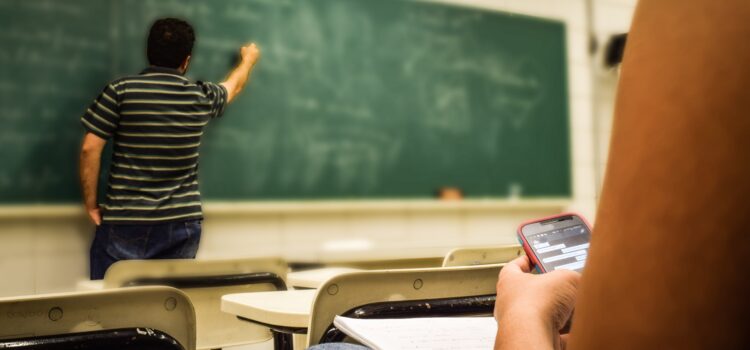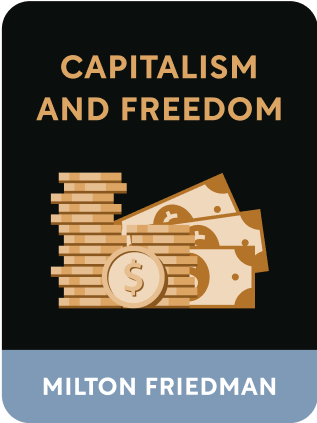

This article is an excerpt from the Shortform book guide to "Capitalism and Freedom" by Milton Friedman. Shortform has the world's best summaries and analyses of books you should be reading.
Like this article? Sign up for a free trial here .
How does the American education system work? Is a government-run education system effective?
In his book Capitalism and Freedom, Milton Freidman answers “how does the American education system work” through a capitalist lens. He argues that having government-funded and government-run schools take away choices and competition for students and parents.
Keep reading to answer the question “how does the American education system work?”
How Does the American Education System Work? Public Funding, Public Control
Even in a capitalist society supposedly based upon voluntary exchange between individuals, we have come to accept a large role for the government in the management of economic affairs and the provision of certain goods and services. We’ve seen this already with important government functions like the curbing of monopolies and regulation of the money supply.
But should the government play such a key role in our lives? Is much of what the government does truly defensible in the context of a society that claims to value economic freedom?
One sector where the government plays a nearly monopolistic role is in the financing and administration of children’s education. But how does the American education system work? In this chapter, we’ll explore:
- Why K-12 education provides broad benefits to society;
- How the American system of government-run schools eliminates choice and competition in education, thereby producing bad results;
- How giving parents the freedom to choose where to send their children to school will boost economic freedom and yield better educational outcomes; and
- Why vocational and technical education should not be supported with taxpayer money.
Neighborhood Effects of Education
We discussed neighborhood effects previously. To recap, neighborhood effects describe those actions by an individual (let’s call them “Individual A”) that:
- Confer a benefit upon other people that by its nature makes it infeasible for them to be charged by Individual A for their receipt of that benefit; or
- Impose a cost upon other people that by its nature is infeasible for them to receive compensation from Individual A.
Because of the nature of such transactions, they make voluntary exchange impractical. Transactions that yield significant neighborhood effects should be undertaken by governments, not the private sector. So how does school funding work and how can it improve?
The provision of education to children and adolescents has strong neighborhood effects. Especially in a democratic system, society broadly benefits by having a population that is literate, civic minded, and adequately prepared to take on the responsibilities of citizenship. Basic education instills these qualities in young people and confers significant benefits upon everyone else, but it is impossible to “charge” everyone else for the “value” of the benefit they receive. Therefore, it is appropriate that governments guarantee K-12 education (although we’ll explore later in the chapter why neighborhood effects don’t apply to education beyond this age range).
Government Financing vs. Government Administration of Schools
Now that you know the answer to the question how does school funding work, you can ask why. Because of the clear neighborhood effects, nearly all advanced, industrialized countries make significant investments in public education. In the United States, K-12 public education is financed primarily through property taxes assessed on those owning property within a given school district. This is often supplemented by additional money from the state and federal government, usually based on standard school aid formulas.
But while the financing of education through public money can be justified on the basis of neighborhood effects, its administration cannot be. So how does the American education system work to actually oversee and control schools? Having governments actually run the schools and directly provide educational services means that parents are legally mandated to send their children to the school for which they are zoned, even if the quality of education at that school is known to be poor or if they dislike the content being taught.
Children attend school in government-owned buildings and are taught government-approved material by government-paid teachers. Parents, given a choice, may not wish to send their children to school in a large physical building, which is expensive to maintain, and where their money as taxpayers might be spent on all manner of activities that they do not deem appropriate or relevant to their child’s education (including art, music, gym, and extracurricular clubs and sports). These are all important factors when asking “how does the American education system work?”
Elimination of Choice for Parents
If parents do not wish to have their money put to such uses or to send their children to low-quality neighborhood schools, their only options are to:
- Pay out-of-pocket for expensive parochial or private schools, which effectively means that they are paying twice for education (as they will still be paying taxes to finance public education), or
- Move out of their school district to one with better schools, a process that is also expensive, cumbersome, and entails significant disruption to one’s life.
So how does the American education system work? The school system is government financed and also has government control. Milton Friedman argues that school choice will improve the system.

———End of Preview———
Like what you just read? Read the rest of the world's best book summary and analysis of Milton Friedman's "Capitalism and Freedom" at Shortform .
Here's what you'll find in our full Capitalism and Freedom summary :
- The key principles from Milton Friedman's Nobel Prize-winning book
- Why capitalism functions best when it is freed from government restraints
- How forced redistribution schemes are morally unjust






